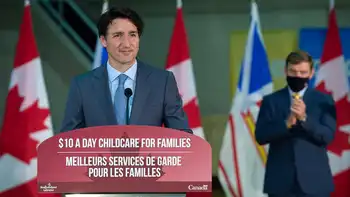Idaho Power submits long-term resource plan
By Idaho Power
Protective Relay Training - Basic
Our customized live online or in‑person group training can be delivered to your staff at your location.

- Live Online
- 12 hours Instructor-led
- Group Training Available
The companyÂ’s 2015 IRP forecasts a moderate increase in customer demand for electricity in the coming years. Current resources are expected to meet that growth in the near term.
A new transmission line to allow more electricity imports from the Pacific Northwest, an increase in programs that manage peak demand, ice-based energy storage and a new natural gas plant are all part of the potential plan for 2025 and beyond. The IRP also considers the impact of anticipated power purchases from new solar projects.
“After months of public meetings, careful analysis and stakeholder input, we believe this plan is the best way to continue Idaho Power’s commitment to serving our customers with reliable, environmentally responsible energy at a fair price,” said Lisa Grow, Idaho Power’s Senior Vice President of Power Supply.
The 2015 IRP evaluates the 20-year planning period from 2015 through 2034. During this period, load is forecasted to grow by 1.2 percent per year for average energy demand and 1.5 percent per year for peak-hour demand. The number of customers is expected to increase to 711,000 by 2034 from 515,000 in 2014, requiring additional company-owned resources.
The biggest resource addition in the plan is the 500-kilovolt transmission line planned from the Hemingway substation near Melba, Idaho, to Boardman, Oregon. The IRP anticipates completion of the Boardman to Hemingway B2H line by 2025. The plan also calls for Idaho Power to work with NV Energy toward the retirement of the North Valmy coal-fired plant in Nevada, which is co-owned by the two utilities.
Changes to the preferred resource portfolio may be required after the Environmental Protection Agency issues final rules for carbon emissions from existing coal-fired power plants. Those rules, under Section 111d of the Clean Air Act, are scheduled to be released in August 2015.
A key component of Idaho PowerÂ’s preferred resource portfolio is maintaining its low-cost baseload power anchored by 17 hydroelectric projects that provide roughly half of the electricity delivered to Idaho Power customers in an average year. Those hydro projects, in addition to the companyÂ’s natural gas-fired plants, are increasingly needed to offset the variable nature of wind, solar and other renewable resources.
“This plan is the result of a lot of hard work, not only by Idaho Power employees, but the members of the public who served on our IRP Advisory Council IRPAC and others who attended the IRPAC meetings and contributed to the process,” said Mark Stokes, Integrated Resource and Operations Plan Manager for Idaho Power.
The IRPAC met monthly, looking at all aspects of the companyÂ’s electrical system and making suggestions for ways to meet that anticipated growth in electricity demand. Twenty-three portfolios were analyzed using a computer model that projects the cost of operating different combinations of resources based on a wide range of variables, such as natural gas prices, increased costs for carbon regulation, and stream flows.
The company proposes two pilot projects as part of the IRP. The first is the installation of solar panels near the end of long distribution feeder lines to boost voltage, and the second is to analyze the cost and benefits of ice based energy storage technology. Ice-based storage systems use electricity to create ice at night that is used to cool the building during the day. This shifts some customer demand from peak daytime hours to nighttime hours when electricity is more plentiful and less expensive for the utility.











